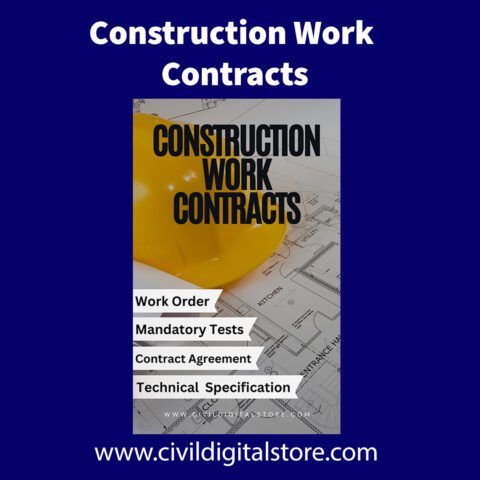Building Cost and Quantity Estimation: Complete Practical Handbook for Civil Engineers A building estimate is an approximation of the cost of a construction project, calculated by estimating the quantities and costs of materials, labour, equipment, and other expenses required for the project. Building estimates are typically created before construction begins and are used by contractors, architects, and building owners to determine the feasibility of a project and to plan for the financial resources needed to complete it. The process of creating a building estimate involves analyzing the project plans, specifications, and other relevant information to determine the number of materials and labour required, as well as the cost of equipment and other expenses. The estimate may also include contingency amounts to cover unexpected costs or changes to the project scope. Building estimates can be presented in a variety of formats, from detailed itemized lists to summary reports.
Building Cost and Quantity Estimation
Introduction
When it comes to building construction, accurate cost and quantity estimation is crucial for planning and budgeting purposes. Whether you are a contractor, developer, or homeowner, having a clear understanding of the materials and costs involved in a construction project is essential for its successful completion. In this article, we will explore the importance of building cost and quantity estimation and how it can benefit your construction projects.
Benefits of Building Cost and Quantity Estimation
Accurate cost and quantity estimation provide several benefits for construction projects:
1. Budget Planning
Estimating the costs and quantities of materials required for a construction project helps in developing an accurate budget. By knowing the expected expenses, you can plan your finances and allocate resources accordingly. This ensures that you have sufficient funds to complete the project without any unexpected financial setbacks.
2. Resource Management
Estimation allows you to determine the exact quantities of materials needed, such as cement, steel, bricks, and other construction materials. This information helps in optimizing resource management by avoiding over or under-ordering materials. Efficient resource management reduces waste, minimizes costs, and improves project timelines.
3. Tendering and Bidding
For contractors and developers, accurate cost estimation is essential during the tendering and bidding process. It enables them to provide competitive and realistic bids, increasing their chances of winning projects. By accurately estimating the costs, contractors can also negotiate better deals with suppliers and subcontractors.
4. Project Scheduling
Estimating the quantities of materials required for a construction project helps in developing an accurate project schedule. By knowing the time required for the procurement and delivery of materials, you can create a realistic timeline for the project. This ensures that the construction progresses smoothly without delays due to material shortages.
5. Cost Control
Accurate cost estimation allows for better cost control throughout the construction process. By monitoring the actual costs against the estimated costs, you can identify any discrepancies and take corrective actions. This helps in avoiding cost overruns and ensures that the project stays within budget.
Methods of Building Cost and Quantity Estimation
There are several methods used for building cost and quantity estimation:
1. Manual Estimation
This traditional method involves manually calculating the quantities of materials required based on architectural drawings and specifications. It requires expertise and experience to accurately estimate the quantities. Manual estimation is time-consuming and prone to human errors, but it can be a cost-effective option for smaller projects.
2. Computer-Aided Estimation
With advancements in technology, computer-aided estimation software has become increasingly popular. These software programs use algorithms and databases to calculate the quantities of materials required based on input parameters such as project size, specifications, and local market rates. Computer-aided estimation reduces human errors, saves time, and provides more accurate results.
3. Quantity Takeoff
Quantity takeoff is a method that involves measuring and quantifying the materials required for a construction project. This can be done manually or with the help of specialized software. Quantity takeoff provides a detailed breakdown of the quantities of each material needed, allowing for precise cost estimation.
4. Cost Databases
Cost databases are comprehensive collections of cost data for various construction materials and activities. These databases provide up-to-date information on material prices, labor costs, equipment costs, and other project-related expenses. By referencing cost databases, estimators can quickly and accurately estimate the costs of construction projects.
Conclusion
Building cost and quantity estimation play a crucial role in the success of construction projects. Accurate estimation helps in budget planning, resource management, tendering and bidding, project scheduling, and cost control. Whether you choose manual estimation or computer-aided methods, it is essential to invest time and effort into accurate estimation to ensure the smooth execution of your construction projects..
Building Cost and Quantity Estimation
Follow on Facebook click here
More Software on click here











There are no reviews yet.